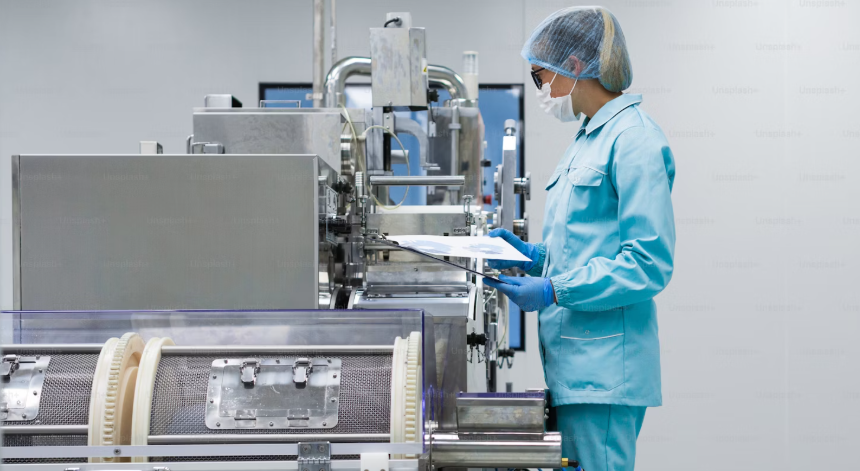Why Medical Device Engineering Is the Backbone of Breakthrough Innovation
In the rapidly evolving field of medical device engineering, the role of a skilled engineering team cannot be overstated. At the intersection of technology, healthcare, and regulatory standards, engineering forms the core of every successful breakthrough innovation in medtech. Here’s why it’s absolutely essential to focus on the right engineering expertise when developing cutting-edge medical devices.
Table of Contents
Comprehensive Spreadsheet for Medical Device Engineering
| Category | Insight/Knowledge | Practical Tips and Suggestions |
|---|---|---|
| Understanding the Role of Engineering in MedTech | Medical device engineering integrates mechanics, electronics, and software to create life-saving innovations. | Foster interdisciplinary collaboration early to ensure seamless integration of all components. |
| Prototyping and Concept Validation | Engineers turn ideas into functional prototypes for testing and feedback. | Use rapid prototyping techniques like 3D printing to quickly validate concepts and iterate designs based on user feedback. |
| Materials Engineering | Material selection is critical for safety, functionality, and compliance in medical devices. | Choose FDA-approved, biocompatible materials and test for sterilization compatibility to ensure safety and durability. |
| Design for Manufacturability (DFM) | Engineers optimize designs for efficient and cost-effective manufacturing. | Involve manufacturing experts early to identify potential bottlenecks and optimize assembly processes. |
| Embedded Systems in MedTech Devices | Many medical devices rely on embedded systems for real-time data processing and control. | Use microcontrollers with low power consumption to extend battery life for portable devices. |
| Regulatory-Driven Design | Engineers must design devices to meet stringent regulatory standards (FDA, ISO 13485). | Implement a Quality Management System (QMS) from the start to ensure regulatory compliance is built into the design process. |
| Risk Management in Engineering | Identifying and mitigating risks is a core engineering responsibility in medtech. | Use tools like FMEA (Failure Modes and Effects Analysis) to assess and address potential risks throughout the development lifecycle. |
| Miniaturization of Devices | Demand for smaller, portable devices drives innovation in microengineering. | Leverage MEMS (Micro-Electro-Mechanical Systems) for compact and efficient designs in wearables and portable diagnostics. |
| Human Factors Engineering | Ensuring usability and safety for end-users is integral to device success. | Conduct iterative usability testing with real users to refine device interfaces and reduce the risk of user errors. |
| Software Integration | Many medtech devices now include software for enhanced functionality. | Ensure compliance with IEC 62304, the standard for medical device software lifecycle processes. |
| Additive Manufacturing (3D Printing) | Revolutionizing how engineers prototype and produce complex geometries. | Use additive manufacturing for low-volume production and intricate parts that traditional manufacturing cannot achieve. |
| Data Security in Connected Devices | Engineering connected medical devices requires robust cybersecurity measures. | Follow FDA cybersecurity guidelines to protect patient data and ensure secure device operation. |
| AI Integration in Medical Devices | Engineers are increasingly incorporating AI for predictive analytics and decision support. | Use explainable AI models to meet regulatory requirements and ensure trust in AI-driven outcomes. |
| Sustainability in Device Engineering | The medtech industry is shifting toward more sustainable designs and processes. | Use lifecycle assessment tools to evaluate and minimize the environmental impact of medical devices. |
| Iterative Design Processes | Breakthrough innovations often result from multiple iterations of testing and refinement. | Use Agile development methodologies to enable flexibility and faster iteration cycles. |
| Interoperability Standards | Modern devices must work seamlessly with existing healthcare systems. | Design to comply with interoperability standards like HL7 and FHIR to ensure system compatibility. |
| Advanced Sensor Integration | Sensors enable real-time monitoring and diagnostics in medtech devices. | Choose sensors with high sensitivity and low noise for accurate readings in critical applications. |
| Thermal Management in Devices | Overheating can compromise functionality and safety in medical devices. | Use passive cooling techniques like heat sinks or thermal pads to manage heat dissipation effectively. |
| Power Management | Portable devices require efficient power solutions to ensure usability and reliability. | Integrate low-power components and explore energy harvesting technologies for extended battery life. |
| Customization for End-Users | Personalization is becoming a key driver in medtech device engineering. | Use modular designs to enable customization for different patient needs without redesigning core components. |
| Nanotechnology in MedTech | Nanoengineering is unlocking breakthroughs in drug delivery and diagnostics. | Collaborate with nanotechnology experts to develop innovative solutions for targeted therapies and early disease detection. |
| Quality Assurance in Engineering | Engineers play a key role in maintaining device quality during development and production. | Use statistical process control (SPC) techniques to monitor and improve manufacturing consistency. |
| Telemedicine Integration | Devices engineered for remote patient monitoring are increasingly vital in healthcare. | Include telehealth connectivity as a core feature in devices for chronic disease management and post-operative care. |
| Lifecycle Cost Analysis | Engineers contribute to cost reduction by analyzing costs across the device lifecycle. | Use PLM (Product Lifecycle Management) tools to assess cost-saving opportunities during design and production. |
| Collaboration with Clinicians | Close collaboration between engineers and clinicians ensures that devices meet real-world needs. | Include clinicians in the early stages of design to gain insights into usability and clinical relevance. |
| Cross-Disciplinary Skills | Modern engineering teams require expertise in electronics, software, and biology. | Provide ongoing training for engineering teams to stay updated on the latest interdisciplinary advancements. |
The Importance of Medical Device Engineering
1. Bridging Technology and Healthcare
Medical device engineering connects innovative technology with real-world healthcare needs. From the development of wearable health monitors to life-saving surgical robots, engineering ensures that these devices are both functional and safe for patients. Without a solid engineering foundation, even the most promising concepts would remain unfeasible or unsafe.
2. Regulatory Compliance and Quality
In medtech, engineering isn’t just about making something work—it’s about making it work safely and in full compliance with regulatory standards. The FDA, CE marking, and other regulatory bodies have strict guidelines that must be adhered to in the design and manufacturing of medical devices. An engineering team well-versed in these regulations will ensure that every device is up to code and ready for market.
Key Elements of a Successful Medical Device Engineering Team
1. Cross-Disciplinary Collaboration
Successful medical device engineering requires close collaboration between engineers, designers, regulatory experts, and medical professionals. Only by working together can the team create devices that are not only technically advanced but also meet the specific needs of healthcare providers and patients.
2. Prototyping and Testing
Prototyping isn’t just about seeing the design come to life; it’s about rigorous testing to ensure the device meets both performance standards and regulatory requirements. The engineering team plays a key role in iterating on designs, identifying potential issues early, and refining the prototype to meet the highest standards.
Overcoming Common Engineering Challenges
- Navigating Regulatory Hurdles
Regulatory compliance is one of the most challenging aspects of medical device engineering. Navigating the complexity of FDA approval or CE certification can often delay product timelines. However, a well-equipped engineering team familiar with these processes can avoid costly delays and accelerate the time to market. - Material Selection and Design Constraints
Choosing the right materials for medical devices—especially those in direct contact with patients—can be tricky. Engineers must ensure that the materials are biocompatible, durable, and capable of functioning as intended without risk to patient safety.
Medical device engineering is pivotal in advancing healthcare through the development of innovative technologies that enhance patient outcomes and streamline medical procedures. This multidisciplinary field encompasses the design, development, testing, and manufacturing of medical devices, integrating principles from engineering, biology, and medicine.
Key Aspects of Medical Device Engineering:
- Design and Development: Engineers collaborate with healthcare professionals to conceptualize devices that address specific medical needs, ensuring functionality, safety, and compliance with regulatory standards.
- Materials Selection: Choosing appropriate materials is crucial for device performance and patient safety. Factors such as biocompatibility, durability, and sterilization compatibility are meticulously evaluated.
- Prototyping and Testing: Developing prototypes allows for rigorous testing and validation, ensuring devices meet clinical requirements and regulatory guidelines.
- Regulatory Compliance: Navigating complex regulatory landscapes, such as those outlined by the FDA’s Center for Devices and Radiological Health, is essential to bring a device to market.
- Manufacturing and Quality Assurance: Scaling up production while maintaining quality involves implementing robust manufacturing processes and adhering to standards like ISO 13485.
Resources for Further Exploration:
- World Health Organization (WHO): The WHO provides comprehensive insights into the role of biomedical engineers in the lifecycle of medical devices. Their publication, Human Resources for Medical Devices: The Role of Biomedical Engineers, delves into this topic extensively.
- MIT Medical Device Design: For those interested in the educational aspects and resources related to medical device design, the MIT Medical Device Design program offers valuable materials and organizational links.
- Biomedical Engineering Society (BMES): The BMES provides a platform for professionals in the field, offering resources and information pertinent to medical devices. Their Medical Devices Special Interest Group is particularly noteworthy.
By leveraging these resources, professionals and students can deepen their understanding of medical device engineering and its critical role in healthcare innovation.
Conclusion
The role of medical device engineering in innovation cannot be overlooked. From bridging healthcare with technology to ensuring safety and regulatory compliance, engineering is the backbone that supports every successful medical device. At OVA Solutions, we specialize in developing world-class medical devices, with a team of engineers dedicated to navigating these challenges and ensuring that each product is designed for success.
For more insights on building a successful engineering team, check out our related article: How to Build a World-Class Medical Device Engineering Team.




 430 Park Ave, New York, NY 10022, USA
430 Park Ave, New York, NY 10022, USA Paevalille tn 6, Office 84, Estonia, Tallinn, 13517
Paevalille tn 6, Office 84, Estonia, Tallinn, 13517 Barykadna St 7, Dnipro, Ukraine, 49000
Barykadna St 7, Dnipro, Ukraine, 49000